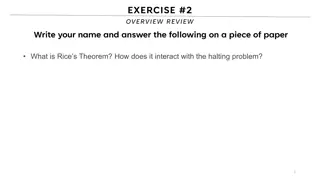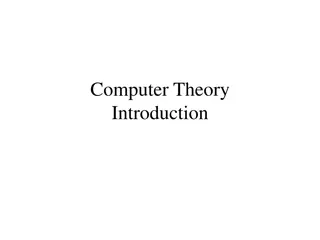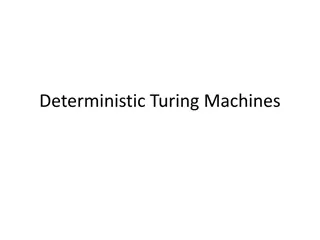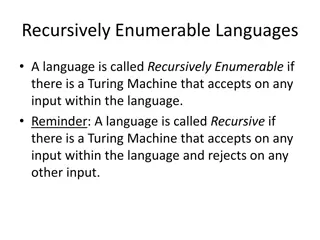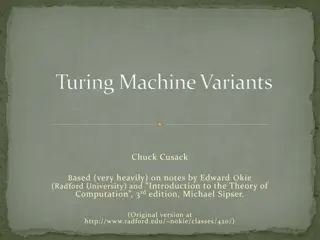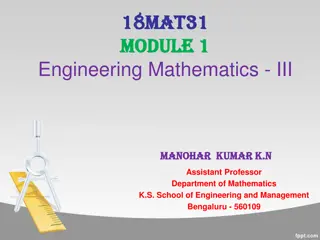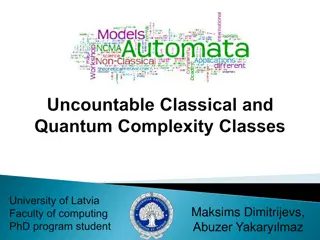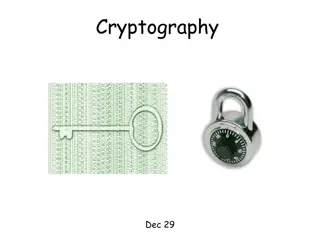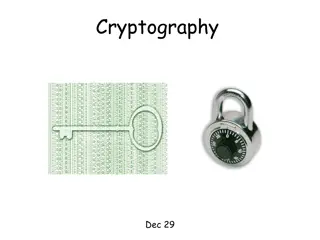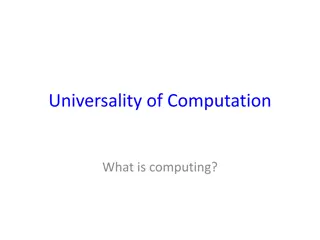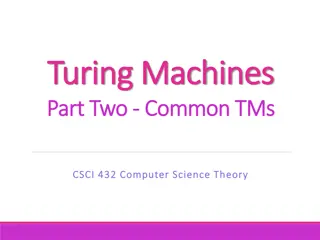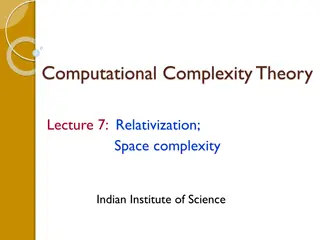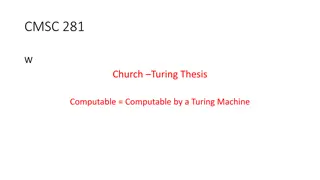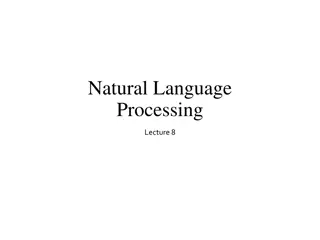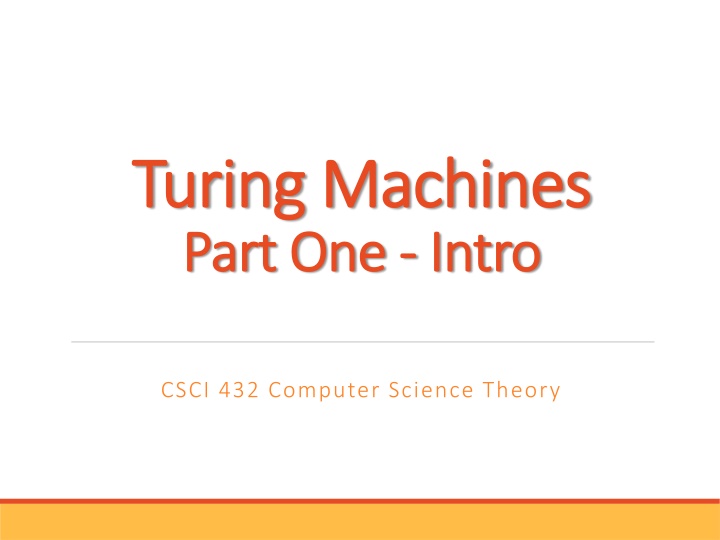
Turing Machines and Alan Turing's Contributions
Explore the world of Turing machines, Alan Turing's significant contributions to computer science theory, and the fundamentals of human-computer problem-solving processes. Learn about the Church-Turing thesis, the concept of tapes, states in Turing machines, and more essential elements in theoretical computer science.
Download Presentation

Please find below an Image/Link to download the presentation.
The content on the website is provided AS IS for your information and personal use only. It may not be sold, licensed, or shared on other websites without obtaining consent from the author. If you encounter any issues during the download, it is possible that the publisher has removed the file from their server.
You are allowed to download the files provided on this website for personal or commercial use, subject to the condition that they are used lawfully. All files are the property of their respective owners.
The content on the website is provided AS IS for your information and personal use only. It may not be sold, licensed, or shared on other websites without obtaining consent from the author.
E N D
Presentation Transcript
Turing Machines Turing Machines Part One Part One - -Intro Intro CSCI 432 Computer Science Theory
Alan Turing Alan Turing 1912 - 1954 English mathematician, computer scientist, logician, cryptanalyst "father of computer science theory" code breaker for British in WW2
Human Computer Human Computer If a human were to use pencil and paper to solve problems, what fundamental steps would he use? erasing a symbol on paper and replacing it with another symbol the symbol to write would depend on the symbol observed by the pencil the state of mind of the computer Theory of Computing by Kinber & Smith, page 121
Turing Machine Turing Machine Finite Automata a) current state b) next symbol on the tape c) next state based on current state and next symbol Turing Machine additions d) move the tape backwards e) rewrite the current symbol
Sequence, Selection, Iteration Sequence, Selection, Iteration Sequence o the read head can be moved forward Selection o the states can transition based on the state and the symbol Iteration o the read head can move backward Thus, a Turing Machine has all the elements of an imperative programming language. Theory of Computing by Kinber & Smith, page 122
Church Church- -Turing thesis Turing thesis Every computer algorithm can be implemented as a Turing Machine.
Tape Tape Just like a FA or PDA, the tape is loaded with input symbols before the program is run. The tape has a left border, marked with > if it sees >, it automatically moves right one space The tape has no right border (infinite memory). At the end of the input symbols is a blank space.
States States Just like a FA, the current symbol and the current state determine the next state. o the next state might be the current state A TM has additional actions: o rewrite the current symbol o move forward o move backwards Unlike a FA, a TM does not terminate at the end of input. o Special states terminate the program
Formal Definition Formal Definition S s S H S set of States alphabet, contains > and blank initial state set of Halting States transition function (deterministic)
Formal Notation o This formal definition of the delta function is similar to the notation we used for PDA transitions. o We need to know current state current symbol next state new symbol o Examples o ( (q,a), (p,b) ) When in state q reading symbol 'a', write a 'b' and change state to p. o ( (s,>), (s,R) ) When in state s and reading left end of tape, keep state s and go right
Formal Notation example 1 TM to erase a tape full of the symbol 'a'. 1. ( (s,-), (h,-) ) "-" is my way to indicate a blank 2. ( (s,a), (q,-) ) 3. ( (q,-), (s, R) ) Computations: s q s q s q s h > a a a - > - a a - > - a a - > - - a - > - - a - > - - - - > - - - - > - - - - start state s and initial tape after applying rule 2 after applying rule 3 after applying rule 2 after applying rule 3 after applying rule 1 Theory of Computing by Kinber & Smith, page 124
Common Notation Instead of this form ( (s,-), (h,-) ) ( (s,a), (q,-) ) ( (q,-), (s, R) ) The graphs we used for FAs are easier to draw and use. a/-,- on symbol a / write a blank, don't move -/-,R s q -/-,- on symbol blank / write a blank, move Right h
Example 2 Example 2 Hello World of TMs Turing Machine to determine if the tape is the pattern 01*0 Algorithm: eat first 0 (write over it with a x) eat 1's until we see a 0 (write over them with y) eat second 0 if only blanks remain, then accept 0/x,R 0/x,R A 1/y, R B C 1/1,R -/-,R 1/1,R -/-,R -/-,R reject accept
Example 3 Example 3 L = 0N1N Algorithm repeat: > 0 0 0 1 1 1 - remove that 0 (mark with x) find leftmost 1 remove that 1 (mark with y) move back to leftmost 0 accept if no more 1s A 0/0,R 0/0,L y/y,R y/y,L 0/x,R 1/y,L B C y/y,R x/x,R -/-,L y/y,R -/-,L D for simplicity, transitions to reject state are not shown accept
Next Classes Next Classes more basic Turing Machines creating Turing Machines subroutines varieties of Turing Machines

